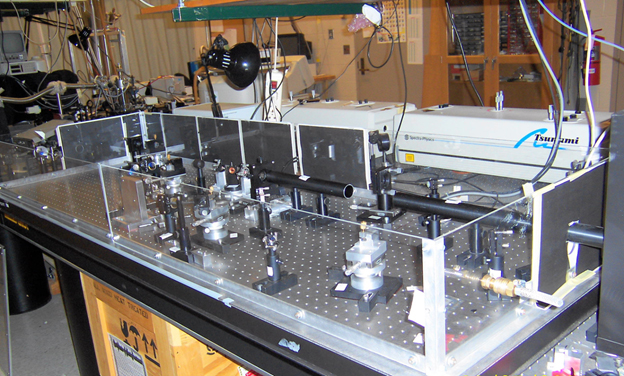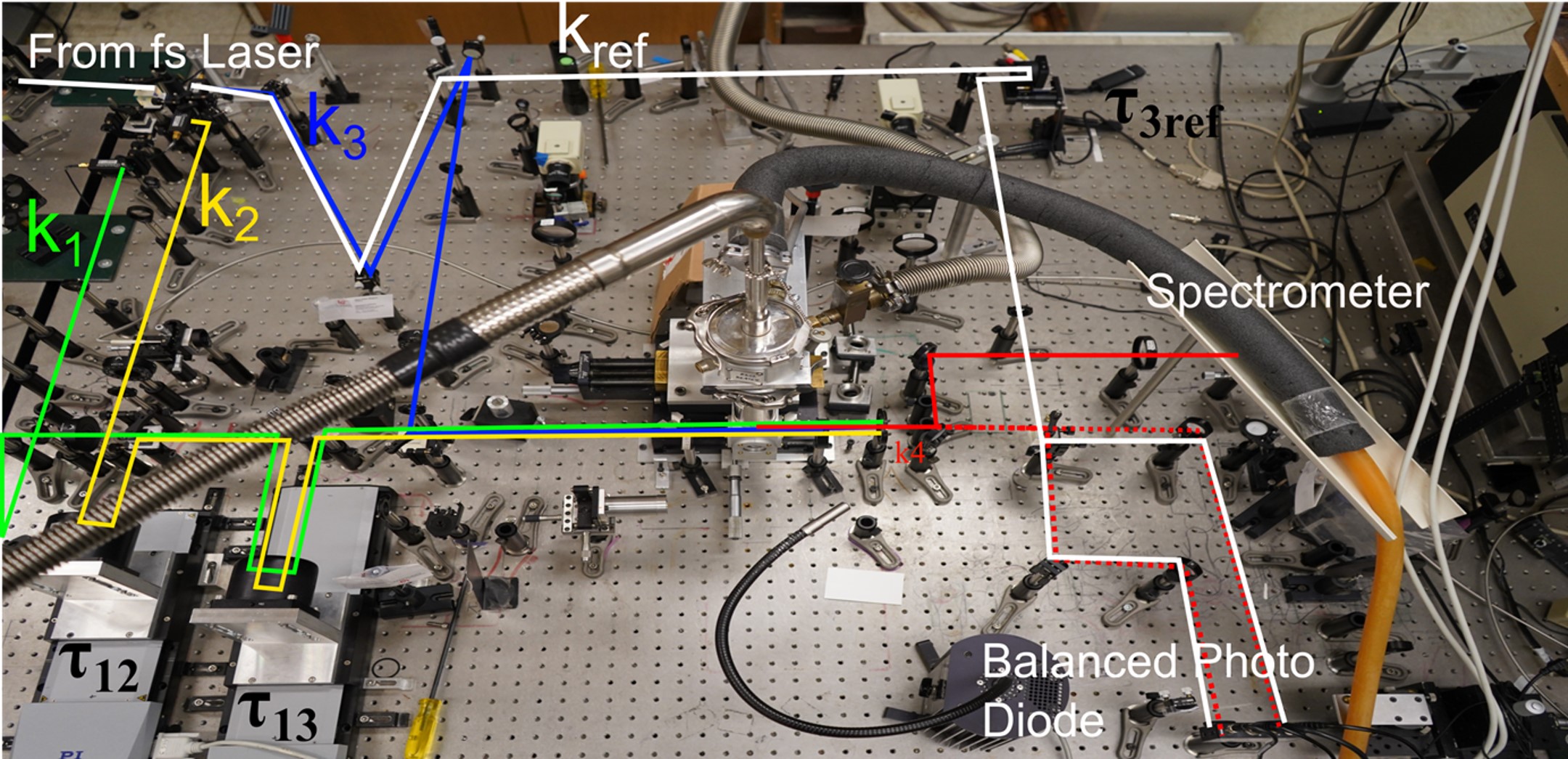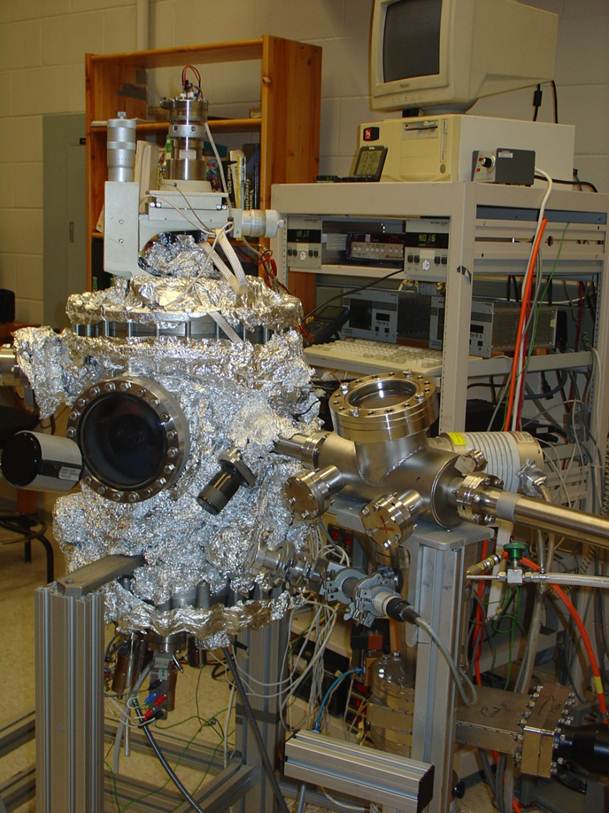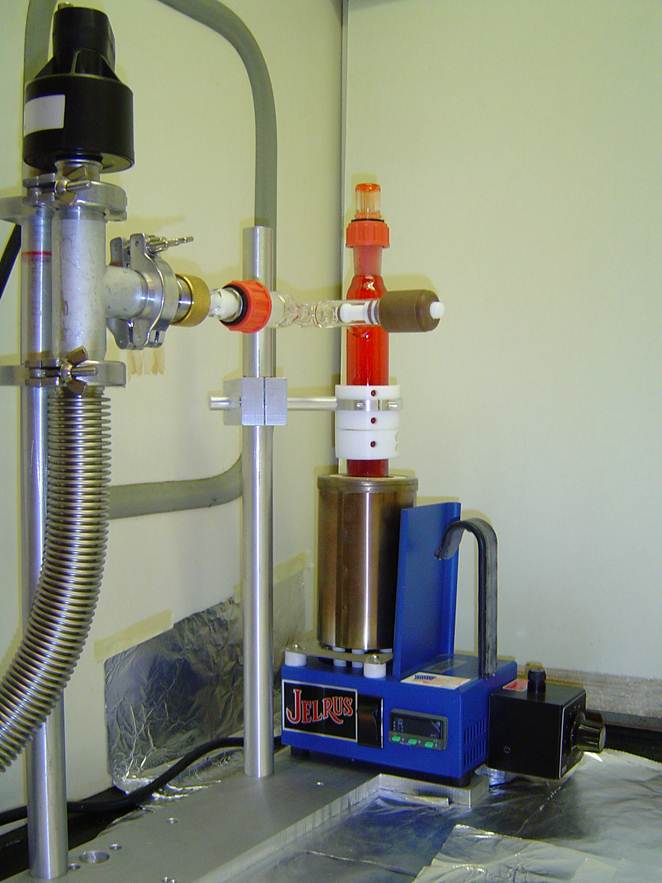Optics Laboratory
In the optics laboratory (21 x 29 ft) the nonlinear optical and ultrafast dynamics experiments are performed. The room is equipped with a He-gas recovery for low temperature measurements, city water supply, closed cycle chilled water for equipment, pressurized air, dry nitrogen gas and 110V, 220V and 480V electricity. Three optical tables with approx. 125 sq ft working area are available in this laboratory.
The equipment in the nonlinear optics laboratory is suited to investigate the absorption, reflectance, photoluminescence (PL) and time-resolved PL in II-VI nanostructures, III-V nanowires (NW), nanowire heterostructures, organic films, hybrid organic/semiconductor nanowires and plasmonic NW structures under cw- and pulsed laser excitation.
The following major equipment is available:
(1) 10 W Millenium Doubled YAG to pump the Femtosecond Lasers
(2) Tunable Ti:Sapphire laser providing cw light, 1 ps, 100 fs (Tsunami from Spectra Physics) (720 - 980 nm)
(3) Self-constructed tunable Ti:Sapphire laser providing sub-20 fs pulses (centre wavelength ~860 nm)
(4) Single Pulse Selector (division ratio 1:2 to 1:5000) (APE)
(5) Precision delay lines from Physics Instruments (PI)
(6) Autocorrelators for 100 fs and sub 20 fs pulses
(7) Monochromator HR 460 with liquid nitrogen cooled CCD camera (Jobin Yvon)
(8) Monochromator HR 320 (Jobin Yvon) with GaAs photomultiplier tube (Hamamatsu) and for absorption and PL measurements
(9) Liquid He-flow cryostat with micro-xyz stage and temperature controlling (Lakeshore) for low temperature measurements with high spatial resolution
(10) He closed cycle cryostat with temperature controller (Lakeshore)
(11) Turbo pump station for cryostats (Pfeiffer)
(12) Controllers (picoharp) for time-correlated single photon counting (TCSPC) from picoquant
(13) Lock-In Amplifier, Stanford Research Model 830
(14) High frequency Lock-In Amplifier, Zurich Instruments
Self-Constructed 20 fs Ti:Sapphire Laser:

Three Beam Spectrally Resolved and Heterodyne Four Wave Mixing Setup:

Organic Molecular Deposition Laboratory
Organic Molecular Beam Deposition (OMBD) Laboratory (1st floor): In the OMBD laboratory (21 ft x 14 ft) the organic molecular beam deposition takes place. The room is equipped with a chemical fume hood, for sample preparation, city water supply, closed cycle chilled water for equipment, pressurized air, dry nitrogen gas and 110V and 220V electricity.
Organic Molecular Beam Deposition:
The Ultra-High vacuum (UHV) organic molecular beam deposition (OMBD) system is outfitted with 5 Knudsen evaporation cells with computer controlled shutters allowing nanometer-controlled growth of organic nanostructures and metallic films with high material purity. All Knudsen cells are temperature controllable, the substrate holder is rotatable. The OMBD system is equipped with UHV load lock with hydrogen plasma supply, 2 turbo pump stations, a dry pump and UHV pressure gauges.

Gradient Sublimation:
A home-made thermal gradient sublimation apparatus is available for purifying the organic material prior to OMBD growth. The apparatus is composed of a glass sublimer which is evacuated to the range of 1x10-6 mbar using a pumping station which consists of a turbo-molecular and a dry pump. The glass chamber is heated up gradually to the sublimation temperature of the organic material by a furnace.

